Dressing up is an art, and for centuries, everyone has done their best to master the same. Out of all the dress materials and unique fashion sense, women trying to contour their waistline has been a major priority, continuing to date. And helping them achieve the perfect goal is a classic quintessential “corset.” It is a unique structural garment that allows women (in particular) to shape up their torsos. Thinking about the exactness of the History of Corsets, the Minoans were the first civilization to embrace the same.
The Minoan snake Goddesses‘ figurine is the earliest evidence of women wearing Corsets. Owing to the ease of wearing and lightweight, modern Corsets are made of leather, silk, and cotton. However, the very first one found in the tomb of Crete was made of wool and linen and worn on special occasions.
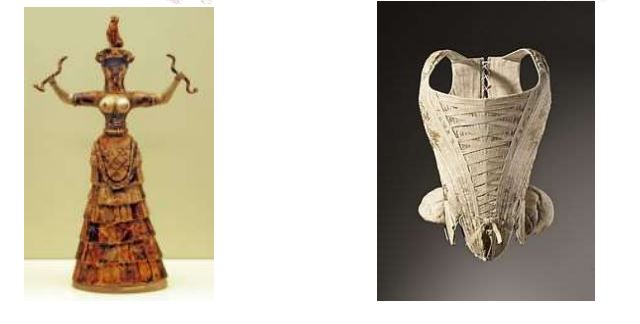
Looking into the past to the history of Corsets, people ask, “When were Corsets most popular?”
It was not till 1838, i.e., the Victorian era, that Corsets became an absolute fashion staple. On demanding to understand “who invented the first corset?” There are various statements that one will come across on the internet. However, Corset fashion has evolved. Here, you can get a clear overview.
History of Corsets: 15th and 16th Century
The term Corset came into use in 1300. In French, it meant “a kind of laced bodice.”
15th Century Corsets
Going back into history, the first-ever true Corset was invented between 1500-1550. But back then, the building materials were horn, buckram, and whalebone. Also, people named the same as “whalebone bodice.”
Catherine de Medici gets all the credit for introducing the fashion of Corset in France. Where the design went as a “busk” or “stay” placed vertically in the center of the torso, and the entire structure was held in place with shoulder straps. Coming to its length, the particular extended till the length of the torso, ending just above the pelvic bone.
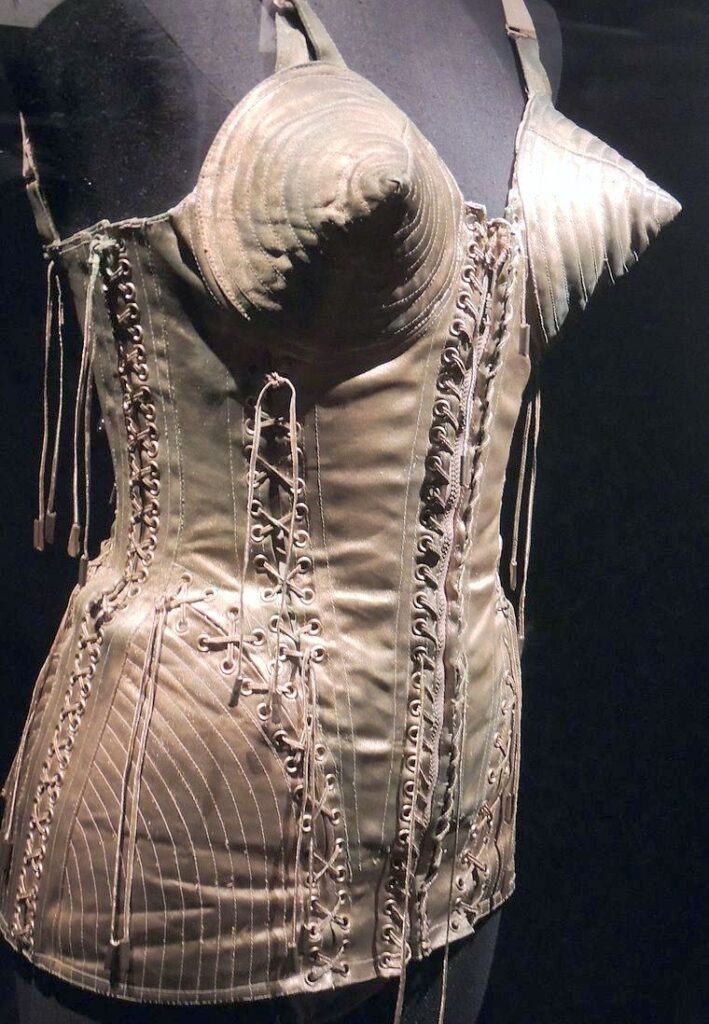
Usually, from 1500-1599, Corset was used by the elite class women with attached farthingales or hoopskirts. The main aim was to make the waist look smaller than the entire body proportion.
16th Century Corsets
The ideal figure of a woman would have a conical shape on the upper bust area. The stays of a Corset were long on the front and short on the sides exposing hips. Also, the neckline was relatively low, revealing the tops of the bust.
Further, from the middle of the 16th century, women in Europe and Britain started wearing the same daily, incorporating a “stomacher” in the front of the Corset. This v-shaped structure made a delicate balance for decorative purposes and was worn around the abdomen.
As time passed, there was an overall shift in the design and structure of the Corset, with the most remarkable change being a shift in the lacing from the front to that of the backside. This period (16th century), known as the Elizabethan era, saw a busk made of wood, iron, whalebone, or metal shaped like a knife added to the front of a bodice tied by laces.
History of Corsets: 17th, 18th and 19th Century
Usually a part of elite dressing style, Corsets were now also worn by the bourgeoisie. The center of attraction was also shifting towards the pattern of Corset instead, solely restricting a woman’s body.
17th Century Corsets
In the early part of the 17th century, the general shape of Corsets was conical, with laces at the back. Along with it, women wore decorative stomachers to highlight their tiny waists. Also, men wore Corsets during this time, and sometimes people attached sleeves with the same. Women often added ornamental lacing and ribbons for a perfect look.
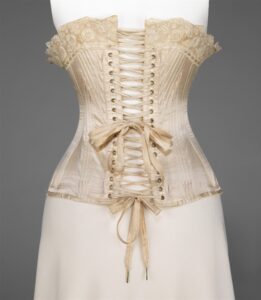
Later, there was a change in the traditional shape, and now Corsets focused on accommodating the natural contours of the bust. However, girls at this time did complain of health problems that they had to suffer due to tying up laces too tightly.
18th Century Corsets
The 18th century marks the reappearance of the traditional Corset setup, where the waistline was made to appear smaller compared to the hips. The setup was adorned with precious silk brocade, finely stitched boning tunnels, and gold trimmings.
The Corset setup was long-waisted and made from linen, wool, or cotton. Also, the makers did add several cuts at the lower edge of the waistband, which used to spread around, creating a line around the waist when the woman wore the same. Thus providing more comfort and room to the hips of 18th Century Corsets.
19th Century Corsets
Despite being a controversial garment restricting a woman’s body, Corset still managed to pass on to another century, retaining its style and aura. Looking at the early 19th-century Corsets, one will see references to an “S bend” curve, perfect for a puffed demeanor.
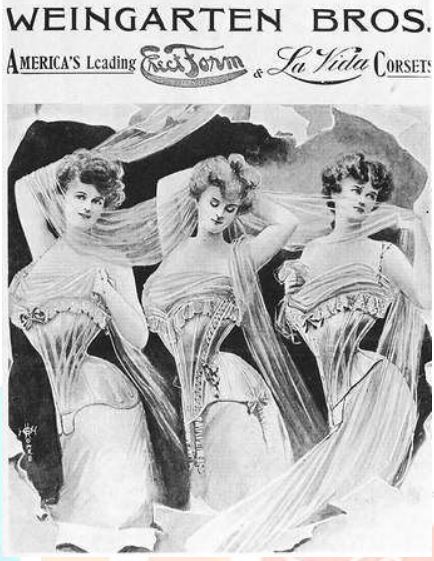
The pre-existing Corset culture by this time underwent two exclusive World Wars – World War 1 (28 July 1914 – 11 November 1918) and World War 2 (1 September 1939 – 2 September 1945). It was the period for women to enter the workforce, marking Corsets out of favor. However, Corset fashion still had a long way to go. Christian Dior reintroduced the wasp-waist corset, emphasizing a fitted bodice and a tiny waist all over again.
Corsets In The Present Day
Owning to the power of social media, OTT platforms releasing shows, and celebrities being open about experimenting with their attires, Corsets are continuing to be a part of modern-day actions.
Talking of the most recent introspections, the show “Bridgerton” on Netflix takes viewers back to the world of elites during the British Regency Era (early 19th century). Thus bringing Corsets to the limelight once again. Just one month into the release of the show, Lyst (global fashion search platform) observed an increase in searches for the Corset category by 123%
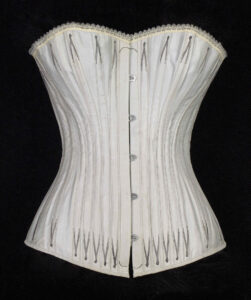
Trends suggest how modern-day women are more into reminiscing the very essence of Corset rather than using it to lower their waistline. Also, this generation finds it attractive to flaunt Corsets over their t-shirts and blouses, cropped tops, and regular shirts, adding to the aesthetics of the look.
Further, there are reports from eBay that 39% of consumers are searching for clothing inspired by the Regency era. Celebrities are not far behind. Stars also considered fashion icons Dua Lipa and Hailey Bieber took to their Instagram accounts flaunting the modern-day vintage Corsets. But this time, the controversial piece of clothing was all about a simple structure with rigid lines.



